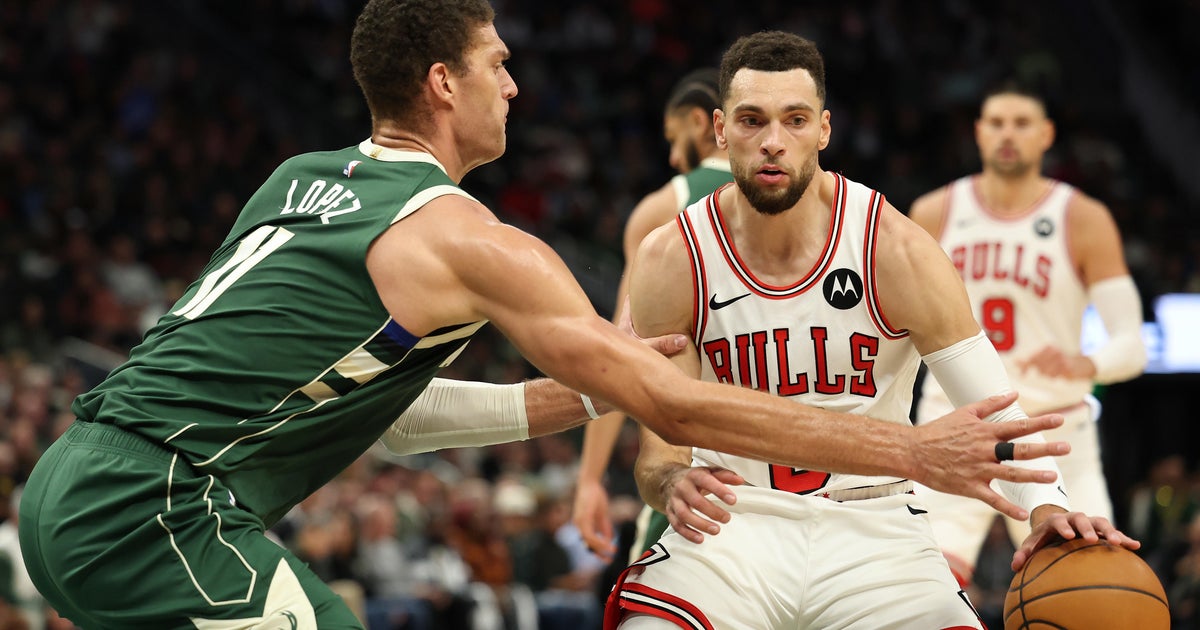Durkin's Playbook: Titans Running Game Taking Shape
By Dan Durkin-
(CBS) After the first two games of the season, Tennessee Titans running back Chris Johnson was on pace to break 100 rushing yards in the third quarter of Week 9 (coincidentally the Titans game against the Bears). Johnson mustered a meager 21 yards on 19 carries and quarterback Jake Locker was the leading rusher in both games. Clearly, this wasn't the type of return the Titans were expecting from their superstar.
What was the cause of Johnson's struggles? A combination of factors: the offensive line wasn't opening running lanes, and Johnson wasn't showing patience behind the line of scrimmage to make the proper reads. The Titans run an inside-zone running scheme, which means their lineman are blocking specific areas on the first level - the defensive line - of the defense, rather than specific players.
Effectively running the inside-zone system takes time to develop, as it involves the lineman and running back working in tandem. The line must know specific blocking assignments on the playside and backside, uncovered lineman - those without a defensive lineman lined up across from them - need to give an initial double team and then get to the second level to secure a block on a linebacker. Rules like these only scratch the surface of zone-blocking principles, so a multitude of factors figure into the success or failure of an inside-zone play.
This system does have the potential to handcuff Johnson if he's impatient, but it also provides the opportunity for huge gains on cutbacks if he takes time to read how his blockers are set up. Conceptually, all of this may have been a little foreign to Johnson at first, as he's used to heading north-south, making a few moves in the open field and out-running the defense.
Using NFL GameRewind's All-22 Coaches Film footage, I break down the Titans inside-zone running scheme.
The situation: The Titans line up in regular personnel (2RB-2WR-1TE), and the Bills line up in a 4-3 over front, meaning their nose tackle is lined up to the weak or open side of the formation. The play is designed to go to the weakside, thus the playside offensive lineman are the left guard and tackle. Bills safety Jarius Bird (circled in blue) walks into the box on the snap to provide run support, and George Wilson (in red) drops back as the single-high safety.
The Bills are able to fill the running lanes to the playside, but on the backside of the play, tight end Craig Stevens and wide receiver Damian Williams seal off the defensive end and cornerback, leaving a huge cutback lane for Johnson.
Wilson (in red) flows down to the ball, but takes a flat angle, allowing Johnson to bounce it towards the sidelines and win the footrace to the endzone for the touchdown.
This play illustrates the importance of backside containment by the defensive end, linebacker and corner, but most importantly the safety must take a proper 45-degree angle to the ball carrier to force him back into the middle of the defense.
The situation: Same personnel as above, the Titans line up in regular personnel (2RB-2WR-1TE), and the Bills line up in a 4-3 over front. Safety George Wilson (in red) walks into the box before the snap of the ball and Jarius Bird (in blue) drops as the single high safety, 13 yards off the line of scrimmage.
The Titans offensive line blocks the first level of the defense, and left guard Steve Hutchinson is able to get to the second level to take out middle linebacker Kelvin Sheppard. The Bills strong side linebacker Nigel Bradham fills his lane, but gets caught up in the wash.
This play is designed to give Johnson a choice to go either direction, seeing Wilson (in red) filling the hole on the strong side, Johnson cuts left, following the block of fullback Quinn Johnson, who seals off Nick Barnett, leaving only Bird in the open field.
Johnson is able to hide himself behind his offensive lineman before making his cut, and just like the example above, the Bills single-high safety takes a poor angle in run support. This time, it's Bird who takes a flat path to Johnson, nearly falls down, and Johnson scoots 83-yards in the blink of an eye for the touchdown.
Over the past five games, Johnson is averaging 110 yards per game and 5.5 yards per carry. So what's led to the resurgence in the Titans running game? The line is doing a better job at blocking the first two levels of the defense and Johnson is reading his blockers as they set up.
Seeing Chris Conte get burned by guessing and opening his hips too early last weekend against the Panthers, his discipline and pursuit angles in run support – something I wrote about before the season here – will be tested against the Titans.
Granted, I doubt you'll see the Bears dropping a safety in the box and playing Cover-1 (Man Free) this weekend against the Titans, but the fact remains that one false step against Johnson can break the defense's back.
Dan Durkin joined The Score's columnist community after finishing runner-up in the 2011 Pepsi Max Score Search. He is a graduate of the University of Illinois where he was a member of the men's football team (despite his best efforts to join the women's team). Dan is a longtime Scorehead, known as Dan in Wicker Park - even though he no longer resides in Wicker Park - who will be sharing NFL analysis and opinions. You can follow Dan on Twitter @djdurkin. To read more of Dan's blogs click here.









